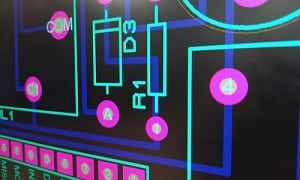With the new reference design, engineers can go from concept to design in under 15 minutes, thus saving time and reducing risk
 Reference designs help engineers understand, qualify and successfully implement new components into their designs. To save time and reduce risk, engineers often end up using portions of the reference design circuitry in their design as these have already been tested and qualified by the component vendor.
Reference designs help engineers understand, qualify and successfully implement new components into their designs. To save time and reduce risk, engineers often end up using portions of the reference design circuitry in their design as these have already been tested and qualified by the component vendor.
Unfortunately, most reference designs are only available in PDF or other static formats, requiring engineers to re-create the designs in their CAD tools, wasting time and creating opportunities for error during transcription.
Ultra Librarian, a cloud-based CAD library provider, has announced in partnership with TDK to bring a 5W to 40W DC-DC multi-module reference design, from TDK’s µPOL Embedded DC-DC Converters product line for enabling design engineers to go from concept to design in under 15 minutes.
“This reference design is available in eight CAD formats and its accuracy has been thoroughly tested and verified by the TDK engineering team,” said Manny Marcano, president and CEO of EMA. “Therefore, our customers can be confident in the quality of their starting point in the CAD tool of their choice, rather than spending numerous hours recreating a design from a PDF and sourcing relevant parts.”
Reference designs from Ultra Librarian can be downloaded as native CAD files by design engineers, eliminating the risk and inefficiencies caused by downloading PDF’s. This TDK reference design is available in OrCAD, Allegro PCB, Altium, Design Spark, Eagle, KiCAD, Mentor DX Designer, and Mentor PADS Logic formats, allowing designers to hit the ground running.
“The starter reference design features TDK’s Chip Embedded µPOL DC-DC power modules, maximising power delivery for high density, small form factor, and low-profile designs, which will ultimately enable higher PCB board density and better system-level integration,” said Tony Ochoa, Director of Marketing, µPOL, TDK. “These power modules are ideal for crafting DC-DC power solutions in the nooks and crannies between and around the FPGAs, ASICs, memory and under the hoods of heat sinks on the top or bottom of PCB boards or daughter cards, for design flexibility. These designs emphasise proper component placement, power and ground design, and thermal considerations for quick turnkey design in a customers’ favourite CAD tool.”






